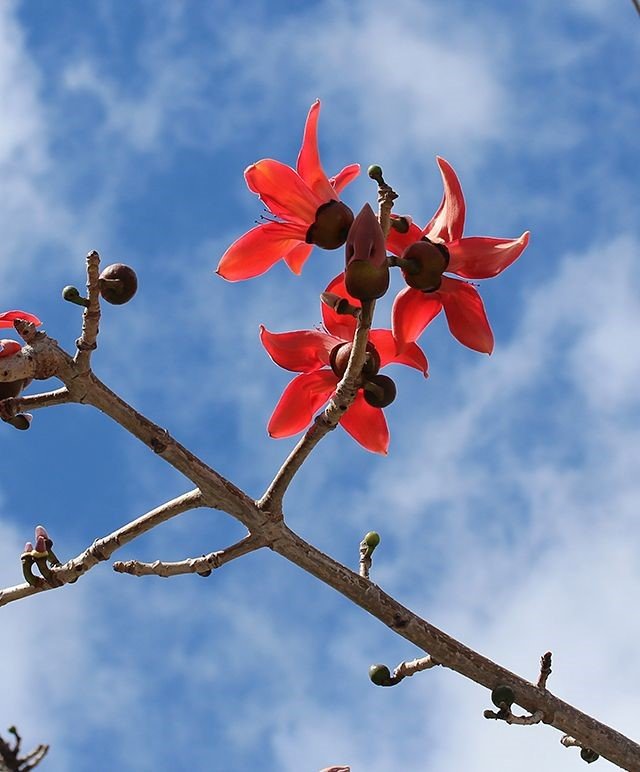Stabilising India-Nepal ties in changing times![Burning Issue] India-Nepal Relations - Civilsdaily](https://d18x2uyjeekruj.cloudfront.net/wp-content/uploads/2022/04/umeshimage_20200622130844.jpg)
The new government in New Delhi in June will have to address several foreign policy priorities, particularly concerning China and Nepal.
Changes Under China’s Shadow
- New Leadership in Nepal: Pushpa Kamal Dahal ‘Prachanda’ is replaced by K.P. Sharma Oli, known for being pro-China and anti-India.
- China’s Response: China is eager to expand its influence in Nepal, possibly at the expense of India’s interests.
- Political Shifts: The far-left revival is paralleled by right-wing calls for restoring the monarchy and Nepal’s Hindu identity.
Nepal – A Historical Perspective
- Transformation: Nepal shifted from being a Hindu kingdom to a secular federal republic post-Maoist insurgency.
- Maoist Influence: The Maoists, once based in India, became known for their ultra-nationalistic, pro-China, and anti-India stance.
- Security Issues: Nepal was a hub for drug smuggling, arms, and terrorist activities against India, highlighted by the 1999 IC 814 hijacking.
- Bilateral Relations: These issues led to a complex crisis affecting Nepal-India relations.
China’s Involvement
- Proactive Stance: China is actively working against India in Nepal, potentially supporting cross-border terrorism.
- Strategic Surveillance: India and its allies (the Quad: Australia, India, Japan, the United States, Indo-Pacific partners) are monitoring China’s moves closely.
India’s Stand
- Low Profile: India has been maintaining a low profile, avoiding involvement in Nepal’s internal affairs.
- Mixed Signals: There is often confusion in Nepal due to perceived mixed signals from India.
- Development Proposal: India could propose a holistic development roadmap to gain public and political support in Nepal.
- High-Level Engagement: Increased Indian attention could foster optimism, stimulate investment, and promote consensus on major projects.
Declining poverty ratio: a continuing trend
Trends in Poverty and Inequality
- Unit-level data provides more accurate estimates than fact sheet averages, but poverty numbers from the fact sheet may not differ significantly from unit-level data.
Estimated poverty ratios:
- Declined from 29.5% in 2011-12 to 10% in 2022-23 (1.77%) based on Rangarajan Committee’s poverty lines.
- Declined from 21.9% in 2011-12 to 3% in 2022-23 (1.72%) based on Tendulkar Committee’s poverty lines.
.jpg)
Gini coefficient changes:
- Rural areas: declined from 0.278 to 0.269 (0.009-point decline).
- Urban areas: declined from 0.358 to 0.318 (0.04-point decline).
Data Collection Method
- NSSO adjusted the recall period of data collection to improve consumption reporting.
- Three estimates of consumption based on recall periods:
- Uniform Reference Period (URP)
- Mixed Reference Period (MRP)
- Modified Mixed Reference Period (MMRP)
- Tendulkar Committee used MRP for 1993-94 and 2004-05 poverty ratios.
- Planning Commission used MRP for 2009-10 and 2011-12 poverty ratios.
- Rangarajan Committee used MMRP for 2009-10 and 2011-12, comparable with 2022-23 estimates.
Measurement Issues
- Discussion on poverty line measurement, with calorie norm-based lines seen as outdated.
- Expert Group (Tendulkar) used the urban poverty line of 2004-05 based on Lakdawala methodology.
- Tendulkar Committee indirectly used calorie norms from Lakdawala Committee.
- New consumption basket should include food components for adequate nourishment and behaviorally determined non-food expenditure.
Poverty Line
- Based on private consumption expenditure.
- Public expenditure would indicate higher household well-being than the poverty line suggests.
- HCES 2022-23 included imputed values for public expenditure items.
- Average Monthly Per Capita Expenditure (MPCE) with imputation showed little difference:
- 2.3% higher for rural areas.
- 0.96% higher for urban areas.
Inference
- Decline in poverty and a slight reduction in inequality in consumption expenditure.
- Income inequality is typically higher than inequality in consumption expenditure.
- Higher poverty cut-off points result in a larger number of people classified as poor.
The impact of 50 years of vaccination on children worldwide
Impact of Vaccinations
- Over the past 50 years, about 150 million children’s lives have been saved due to vaccinations against various diseases.
- The significant reduction in deaths from vaccine-preventable diseases is due to the global expansion of immunisation programs.
- Measles vaccination alone accounts for 60% of these lives saved, with vaccination rates rising from under 20% in 2000 to 70% by 2021.
- This contributed to a decrease in infant mortality rates from around 10% in 1974 to 3% in 2024.
Data Findings
- Chart 1: Displays the number of lives saved by different vaccinations worldwide from 1974 to 2024.
- Chart 2: Shows the regional share of children fully vaccinated against measles according to WHO data.
- Chart 3: Illustrates the percentage of one-year-old children vaccinated against DTP3.
- Western Pacific region had a dramatic increase in vaccination coverage from 2% in 2000 to 91% in 2021.
- Southeast Asia’s measles vaccination rate surged from 15% in 2010 to nearly 80% in 2021.
Institutional Support and Future Directions
- In 1974, the World Health Assembly established the Essential Programme on Immunization, leading to various global vaccination initiatives aimed at eradicating vaccine-preventable diseases.
- Gavi, the Vaccine Alliance, a partnership involving the Bill and Melinda Gates Foundation, WHO, UNICEF, and the World Bank, has played a crucial role in closing gaps in vaccination coverage.
- Continued investment and coordination by governments are essential to provide universal immunisation programs.
An overview of the Smart Cities Mission
The Smart Cities Mission (SCM), a flagship programme of the NDA-1 government, has diminished in prominence in this year’s list of poll promises and achievements.
Understanding Smart Cities
Definition and Origin
- The term ‘Smart City’ gained popularity post-2009, after the financial crash, referring to cities with advanced Information and Communication Technology (ICT).
- Smart cities were envisioned as new Silicon Valleys with integrated networks of airports, highways, and other communication systems.
NDA-1 Government’s Vision
- The NDA-1 government aimed to align with global changes through the ongoing Jawaharlal Nehru National Urban Renewal Mission (JNNURM).
- SCM was launched in June 2015, targeting 100 cities over five years but did not provide a clear definition of a smart city.
The SCM Framework
Key Aspects
- Area-Based Development: Involves redevelopment (renewal), retrofitting (improvement), and greenfield projects (extension).
- Pan-City Solutions: Focuses on ICT-based solutions.
Six Categories
- E-governance
- Waste management
- Water management
- Energy management
- Urban mobility
- Skill development
Timeline and Governance
- Initially planned for completion by 2020, the mission was extended twice, now set to conclude by June 2024.
- Special Purpose Vehicles (SPVs) led by bureaucrats or MNC representatives were created, minimizing the role of elected councils.
Challenges and Shortcomings
Selection Process Issues
- Selecting 100 cities competitively was flawed due to diverse urban realities.
- Only about 1% of a city’s area was selected for development, making SCM exclusionary.
Funding and Investment
- Reports indicate a need for $1.2 trillion in capital expenditure to make Indian cities liveable by 2030, which is only 0.027% of the total requirement in urban India.
- Less than 5% of funding has come through the Public-Private Partnership (PPP) route.
Negative Consequences
- Infrastructure development projects under SCM have led to increased urban flooding due to the dismantling of water channels.
India, Iran sign Chabahar port operation pact
Signing of a 10-Year Contract
- Eight years after establishing the general framework for cooperation on the Chabahar port, India and Iran signed a 10-year operational contract.
- The contract was signed between Indian Ports Global Ltd. (IPGL) and Iran’s Port & Maritime Organisation (PMO), facilitating the operation of the Shahid-Behesti terminal.
- IPGL will invest around $120 million in port equipment, with India also offering a $250 million credit window.

Developments and Process
Port Location and Initial Agreements
- Chabahar is a deep-water port in Iran’s Sistan-Baluchistan province.
- An initial memorandum of understanding for the port’s development by India was signed in May 2015.
- The agreement was executed on May 23, 2016, during Prime Minister Narendra Modi’s visit to Iran.
Trade and Cooperation
- The agreement marked the beginning of enhanced trade, marine cooperation, and transshipment, boosting trilateral trade between India, Iran, and Afghanistan.
- India will use the port for humanitarian aid shipments, emphasizing its commitment to regional development beyond commercial interests.
Semal trees are being wiped out in Rajasthan due to Udaipur’s Holi

Holi in Udaipur
- The silk cotton tree (Bombax ceiba L.), known locally as semal, is central to Holika Dahan festivities in Udaipur.
- The tree is burned to celebrate the mythological victory of good over evil, making it a major attraction for Holi in Udaipur.
- Traditionally, the debarked stem or branch of the semal tree serves as the main pillar of the bonfire.
Unique Characteristics and Role in Ecosystem
- The silk cotton tree has a spiked trunk and fluffy seed pods, and is native to India, earning the nickname “one-tree wildlife sanctuary.”
- It is a crucial species for maintaining forest ecosystems. Its spikes protect rock bee nests from predators like sloth bears.
- The tree supports various species: larvae of the moth Bucculatrix crateracma feed on its leaves, golden-crowned sparrows use its seeds for nest linings, and Dysdercus bugs, Indian crested porcupines, and Hanuman langurs feed on its nectar.
- The Garasia tribe believes they descend from semal trees, which provide them with food, fodder, and fuel wood.
- The Kathodi tribe crafts musical instruments from its wood, while the Bhil tribe uses it to make utensils.
Holika Dahan Events
- In 2024, Udaipur organized 500 Holika Dahan events. In contrast, rural areas hold communal events, making them less frequent.
- Villages often unite to light a single Holika Dahan. Urban centers play a crucial role in protecting Rajasthan’s semal trees by managing the demand for these events.
50% critical mineral block auctions near closure
News Context
- Nearly half of all critical mineral blocks, 20 out of 38, are close to finalization.
- Ola Electric and Vedanta are leading contenders for lithium and platinum group elements (PGE) blocks.
- Officials report a “strike rate” of 30-40% for bids received in three auction tranches.
- In addition to lithium blocks in Jammu and Kashmir, six blocks of minerals such as glauconite, graphite, nickel, PGE, potash, and titanium are located in Bihar, Jharkhand, Tamil Nadu, and Uttar Pradesh.
Finally, rocky planet with atmosphere found 41 light years away
News Context
- After years of searching, astronomers have discovered a rocky planet with an atmosphere, but it is inhospitable due to its molten rock surface.
- This planet is a “super-earth,” larger than Earth but smaller than Neptune, with a rapid orbital period of 18 hours.
About the Planet
- Named 55 Cancri e (or Janssen), it is about 8.8 times more massive than Earth, with a diameter roughly twice that of our planet.
- It orbits its star at a distance 25 times closer than Mercury is to the Sun, with surface temperatures around 1,725 degrees Celsius.
- Located about 41 light-years away in the constellation Cancer, within our Milky Way galaxy.
- A light year is 9.5 trillion kilometers, the distance light travels in one year.
- The planet is likely tidally locked, similar to how the moon is to Earth, and is part of a binary star system.
Other Findings
- The atmosphere is likely rich in carbon dioxide or carbon monoxide, with possible traces of other gases such as water vapor and sulfur dioxide.
- The discovery marks progress in exoplanet exploration, showcasing the potential of rocky planets with atmospheres, as evidenced by the capabilities of the Webb telescope.



